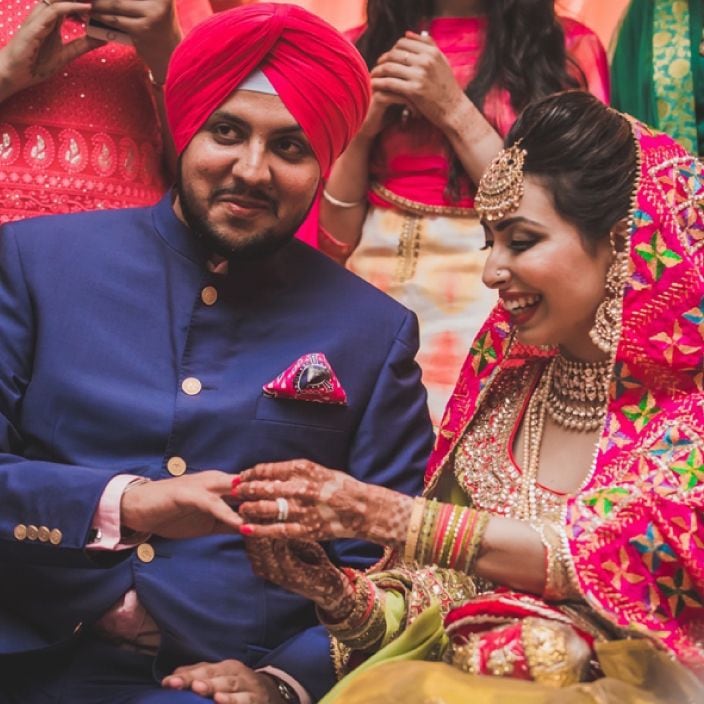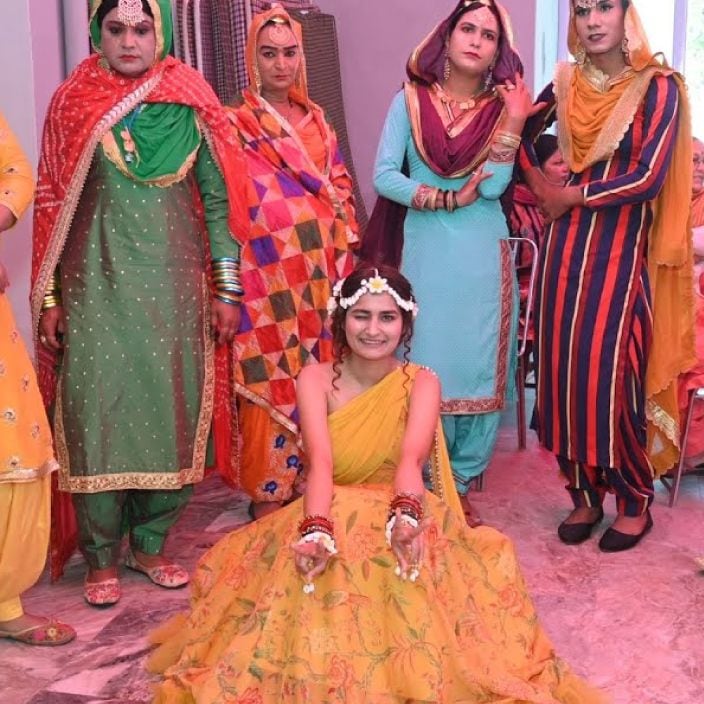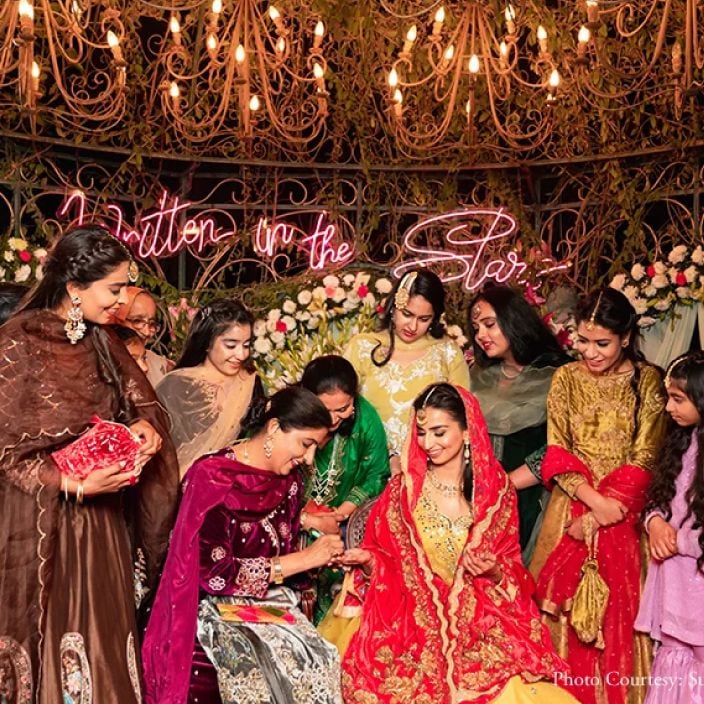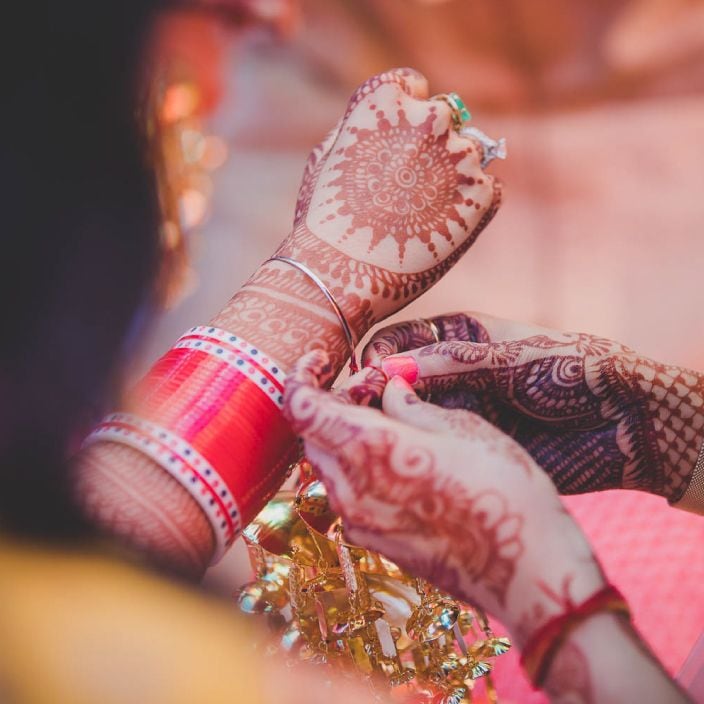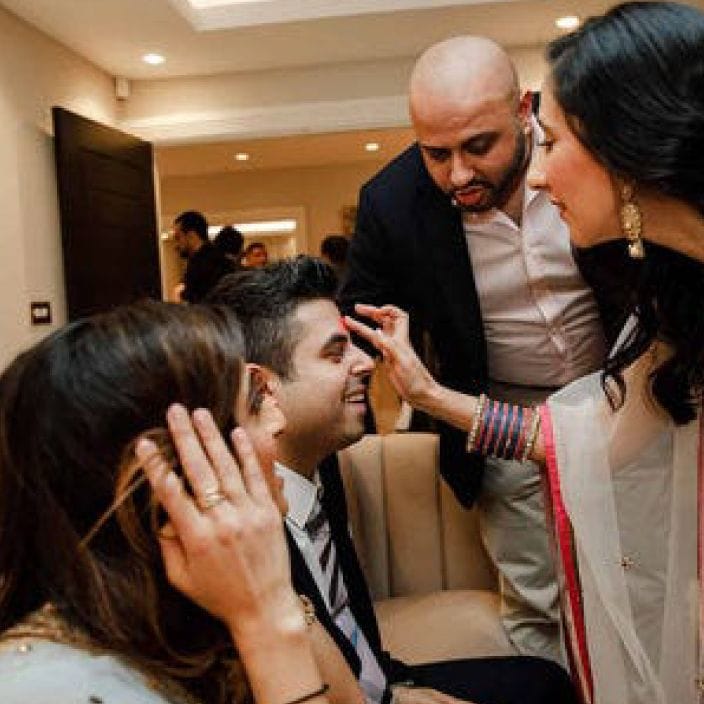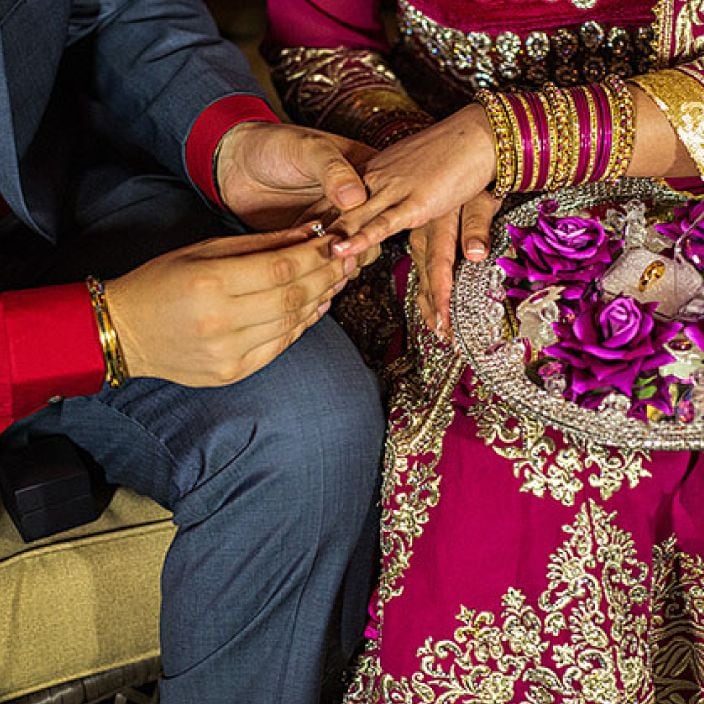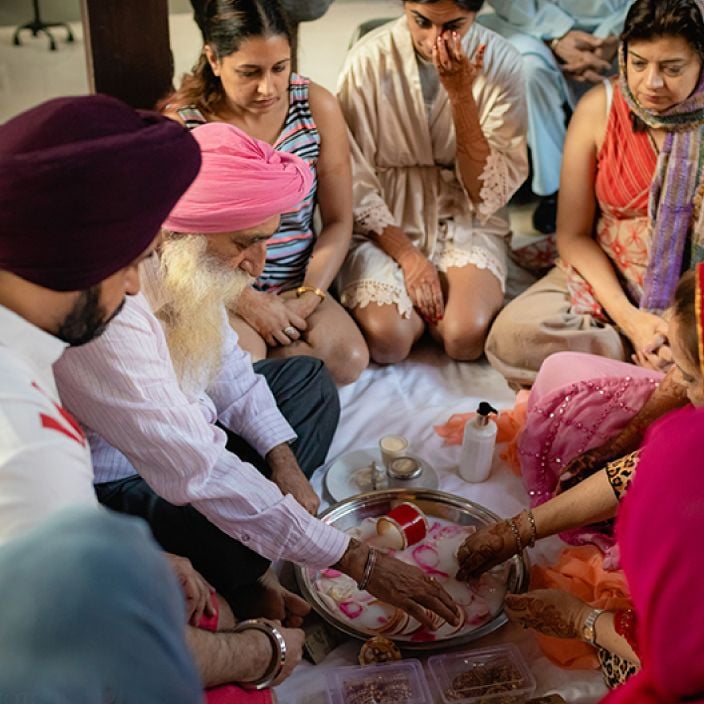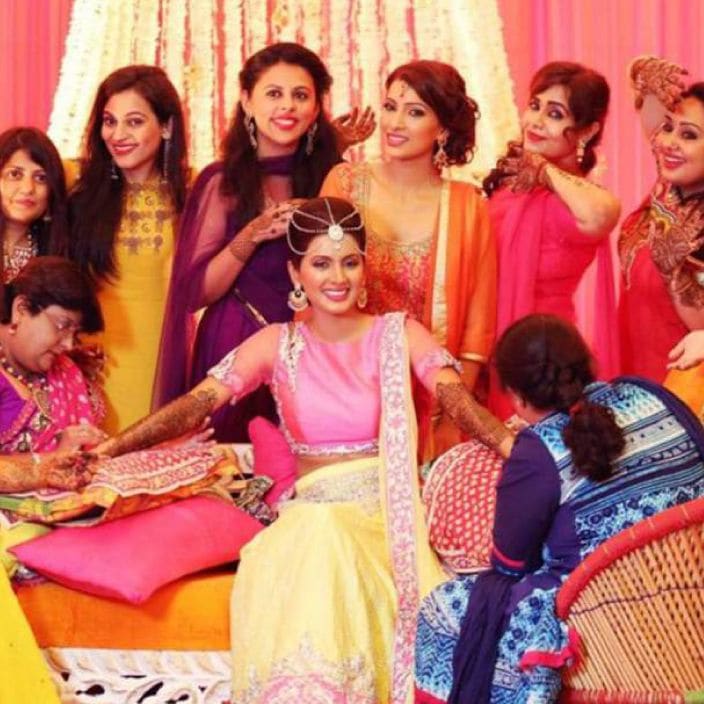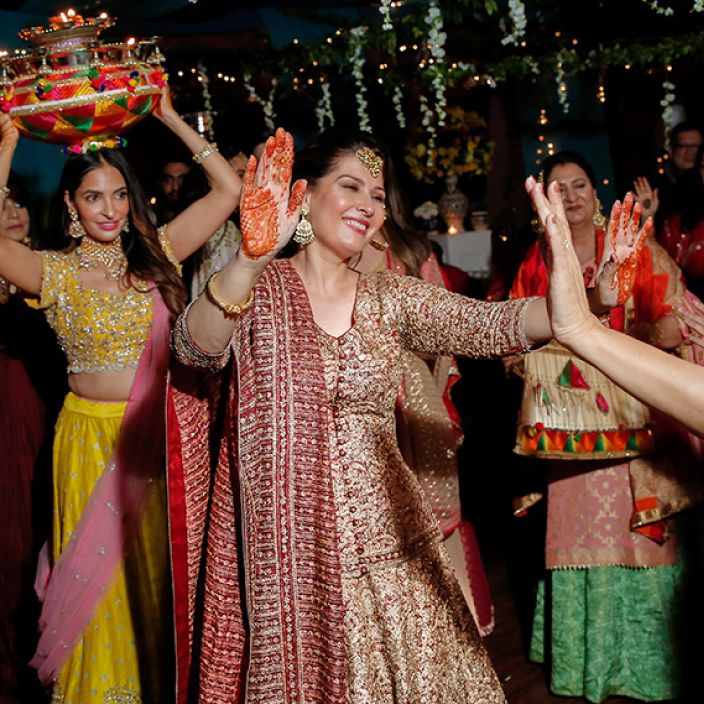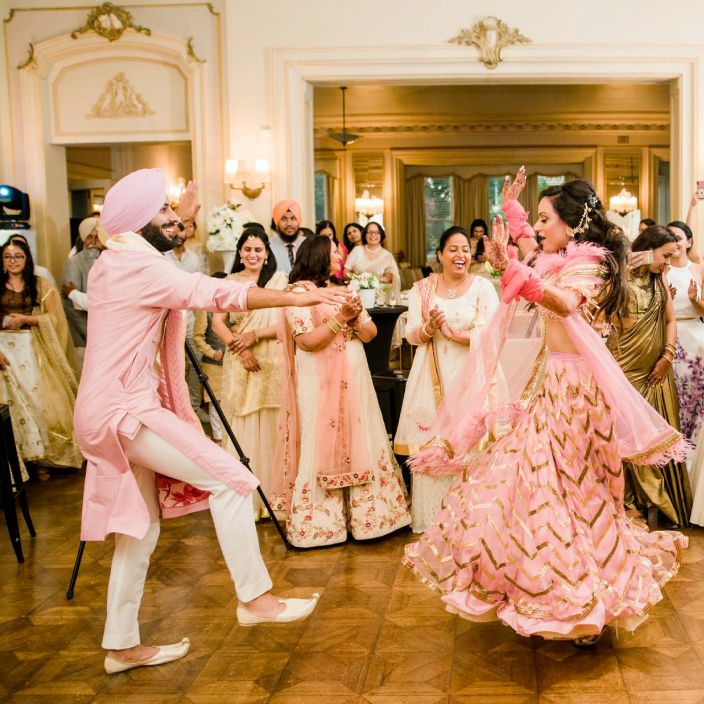For best prices and early deliveries, WhatsApp us at. 918488070070
Punjab, Delhi and Chandigarh
Weddings in North India, particularly in regions like Punjab, Delhi, and Chandigarh, are grand, colourful, and deeply meaningful ceremonies. Steeped in centuries-old customs, they weave together rituals, attire, food, and decor that reflect the rich heritage of each region. Punjabi weddings are a true feast for the senses, from the diverse rituals to the grandeur of the attire, cuisine, and decor. Whether you’re in the lively lanes of Punjab, the bustling streets of Delhi, or the serene, modern city of Chandigarh, each wedding tells a story of love, heritage, and celebration that transcends time.
Tracing the Traditions
It all begins with the Roka, where both families formally accept the match, blessing the couple and exchanging gifts. The Chunni Ceremony follows, where the groom's family gifts the bride a red outfit and jewellery, symbolising her acceptance into their family.
The Kurmai ceremony also referred to as the Sagai (Engagement) solidifies the union, with the couple exchanging rings, marking the official promise of marriage. As the wedding approaches, the Haldi ceremony takes place, where a turmeric paste is applied to the bride and groom, symbolising purification and prosperity. The Mayian Ceremony and Jaggo Ceremony are performed as pre-wedding traditions to invite blessings and joy into the upcoming nuptials.
The Mehendi night brings together family and friends as the bride’s hands and feet are adorned with intricate henna designs, while the Sangeet is a night of music and dance, celebrating the joy of marriage. The Kirtan adds a spiritual element to the festivities, while the Dholki Ceremony brings in music and dance to celebrate this joyous time.
On the wedding day, the bride receives her Chooda – a set of red and white bangles blessed by her family, representing good fortune. The bride makes her grand entrance during Jaimala (Varmala), where the couple exchanges floral garlands. The main ceremony, the Pheras, involves the couple circling a sacred fire seven times, each step signifying a vow.
After the wedding, the bride returns to her parental home for the Pag Phera ritual, symbolising her new responsibilities. The couple participates in Paani Bharna and other symbolic post-wedding rituals. Finally, the grand Reception concludes the festivities as the families celebrate the union with music, food, and joy.
Wedding Attire
The bride’s attire is a breathtaking display of tradition and beauty, with the Lehenga often being the centrepiece. Crafted from luxurious fabrics like silk, velvet, or satin, it is intricately embroidered with gold and silver thread, featuring motifs such as flowers, peacocks, and traditional patterns. The colours are typically auspicious shades of red, maroon, or pink, symbolising prosperity and love. Brides also wear a dupatta, draped gracefully over the head or shoulders, further enhancing the regal look. Jewellery plays an essential role in completing the ensemble, with pieces like the Maangtikka (forehead ornament), Nath (nose ring), and Kaleere (dangling bangles). Heavy gold necklaces, earrings, and armlets create a resplendent and majestic look, while the Chooda, a set of red and white bangles, is worn as a mark of marital joy and good fortune. Many brides also wear family heirlooms, passing down traditions from one generation to the next.
The groom’s attire complements the bride’s elegance, with the Sherwani as the traditional choice. Often made from rich fabrics like silk or brocade, the Sherwani is adorned with intricate embroidery and paired with a matching Churidar (fitted trousers). The groom completes his royal look with a Pagdi (turban), often accessorised with a decorative brooch or feather. A long, embroidered stole draped over the shoulder adds to the grandeur, and during the Baraat procession, the groom traditionally wears a Sehra – a floral veil tied to the turban, creating a sense of mystique as he approaches the wedding venue on horseback.
Traditional Cuisine
The food served at Punjabi weddings is a central part of the celebrations, symbolising abundance and hospitality. They are known for their hearty, rich, and flavorful dishes. Popular items include Butter Chicken, Amritsari Kulcha, Sarson ka Saag, and Makki di Roti, Chole Bhature, Paneer Tikka, Rogan Josh, Tandoori Chicken, and a vast variety of kebabs. One cannot forget the extensive street food counters offering Gol Gappas, Aloo Tikki, and Dahi Bhallas, showcasing the region’s love for chaat. The dessert menu is equally elaborate, with treats like Rabri, Shahi Tukda, and Moong Dal Halwa taking centre stage. You’ll also find regional favourites such as Bajre ki Roti with Lassi and Chaas. Punjabi weddings also have a penchant for elaborate buffets, featuring an array of continental and Indo-Chinese dishes to cater to the city’s cosmopolitan palate.
Cultural Decor
The decor is a breathtaking blend of traditional aesthetics and modern grandeur. Floral arrangements take centre stage, with vibrant marigolds, roses, and jasmine garlands adorning every corner. These bright, fragrant flowers are woven into garlands, hung from ceilings, and used to create elaborate mandap (wedding altar) backdrops. The mandap, often the focal point of the venue, is decorated with colourful drapes, intricate floral installations, and twinkling lights, creating a mesmerising setting for the sacred rituals. Alongside traditional elements, brass lanterns, oil lamps, and rangoli designs made from flowers or coloured powders welcome guests and bring a warm, inviting ambience to the event.
Modern influences have also crept into the decor, with many opting for themed setups ranging from regal palaces to romantic garden-inspired spaces. Chandeliers, fairy lights, and crystal accents elevate the atmosphere, while the use of drapery and metallic finishes adds a touch of luxury. Eco-friendly decor is also gaining popularity, with couples choosing reusable lighting, organic flowers, and sustainable materials for a more conscious celebration.
